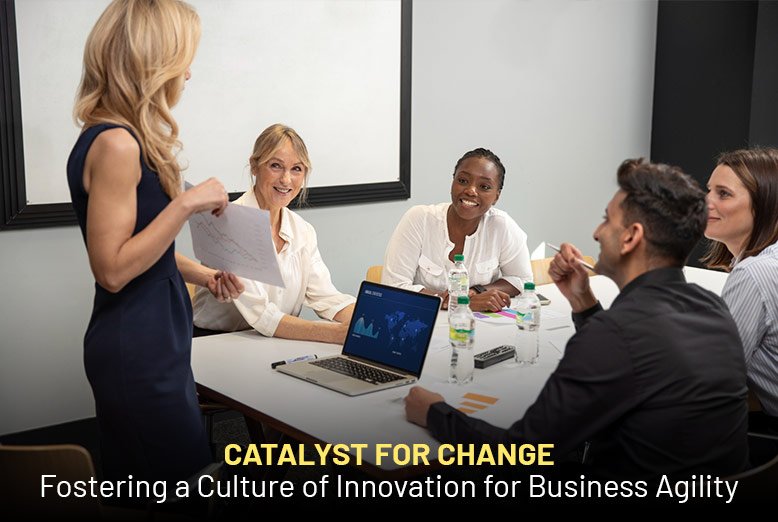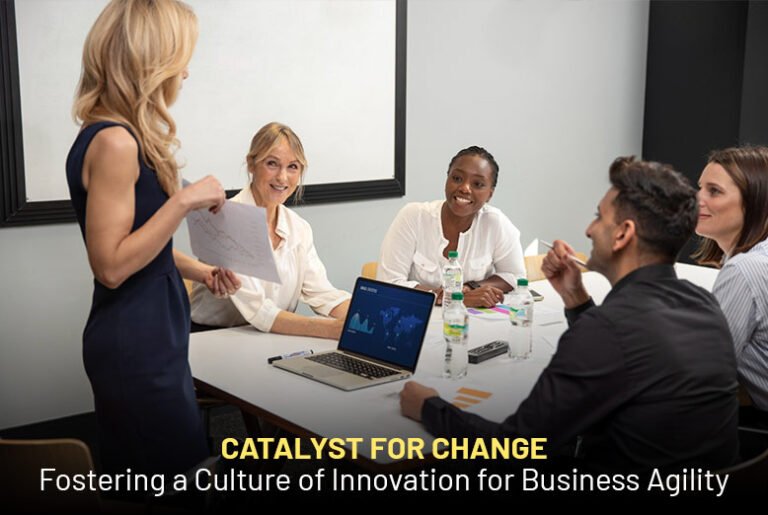Business agility has emerged as a defining measure of sustainable success in rapidly evolving markets today. Companies that can rapidly adjust to changes in conditions, identify market needs, and efficiently implement new offerings tend to have an advantage and do better than other companies. The core to business agility is innovation—not just new products and services, but how a business operates and evolves. In short, a culture of innovation enables a company to preemptively take advantage of disruption, be at the forefront of emerging opportunities, and further entrench its position through brand marketing and branding strategies. At a higher order, when leaders champion an innovative culture and work to embed innovation in an organization’s DNA, change will no longer be resisted—change will be part of the organizational mindset.
Strategies to Build an Innovation-Driven Culture for Agility
1. Ground Decisions in Cultural Insights
A culture of innovation starts with understanding who gets the most out of innovation and who drives organizational innovation—owners, employees, customers, and stakeholders. In this regard, understanding cultural insights gives leaders the opportunity to review not just vague generalizations of people’s barriers and how to overcome them, but also to understand what underlying values, motivations, and behaviors can foster a cultural climate that guides innovation. Understanding culture also provides an avenue to ensure that new ideas are relevant, marketable, resonate with an audience, and reflect the company’s identity.
For example, when an organization is expanding to a new market, they will have the ability to use their understanding of the culture to design products, services, or experiences that they know meet a local need and expectation and do so authentically. When culture is an important factor in strategic-level decision-making, the company is relied upon to act responsibly, and innovation becomes meaningful and impactful while perpetuating speed and agility across multiple business landscapes.
2. Encourage Cross-Functional Collaboration
Innovation is often at the intersections of disciplines. When we de-silo departments, we create opportunities for knowledge sharing, novel perspectives, and inventive solutions. Diverse expertise—from marketing and operations to technology and customer experience—is applied to develop ideas before they are rolled out through cross-departmental collaboration. This improves the quality of the solutions and simultaneously quickens the decision-making process, one of the most necessary components of agility. When employees from diverse backgrounds work together toward shared objectives, they foster a culture where innovation becomes a shared responsibility rather than the task of a single department.
3. Create Safe Spaces for Experimentation
Fear of failure can inhibit innovation. Organizations that create safe experimentation environments can encourage employees to always explore alternative options without the fear of punishment or career interruption. Structured pilot programs, innovation labs, or more limited-scale testing allow for practicality before a significant commitment of resources. If an organization can think of failures as learning opportunities instead of simply failures, it is easier to develop improved strategies and products. Eventually, they are more agile as adaptation becomes more of a constant state with lower risk rather than an earth-shattering event.
4. Invest in Continuous Learning and Development
An innovative culture is sustained when people remain curious, open-minded, and aware of the latest data. By providing access to training, workshops, and other industry-related events and conferences, organizations can ensure that employees are on track with emerging trends, technologies, and methodologies. Learning programs can include more than just technical skill development and may also help develop creative thinking, problem-solving, and leadership skills. Investing in people is an ongoing effort, and keeping current helps organizations plan for and adapt to change and take advantage of opportunities. Employees who learn and feel empowered through skill development are more likely to share fresh ideas and demonstrate initiative to create change.
5. Align Leadership Vision with Innovation Goals
In a business setting, innovation becomes part of the culture when leaders value it. Leaders are the ones to set the stage, share the vision, sponsor new ways of working, and recognize people’s contributions. When the top leaders talk about innovation and visibly support it, they begin to signal that creative thinking and adaptability are an integral part of the organizational culture—they show that it is a “leader value.” When leaders provide clarity on how they intend to work innovatively, this fosters trust and motivates employees to engage. Clarity about the business objectives not only aligns everybody but also allows an organization to be intentionally agile, with the prescribed visionary direction shared by the leaders.
End Point
To embed innovation in your organization’s culture, you must have a deep understanding of people, be open to working together across boundaries, and commit to ongoing development. When innovation becomes an organizational mindset, companies can keep pace with changing markets and align well, with confidence and agility, turning change into a constant state of business sustenance.
Also read; How Cultural Insight Drives Smarter Business Planning Today










